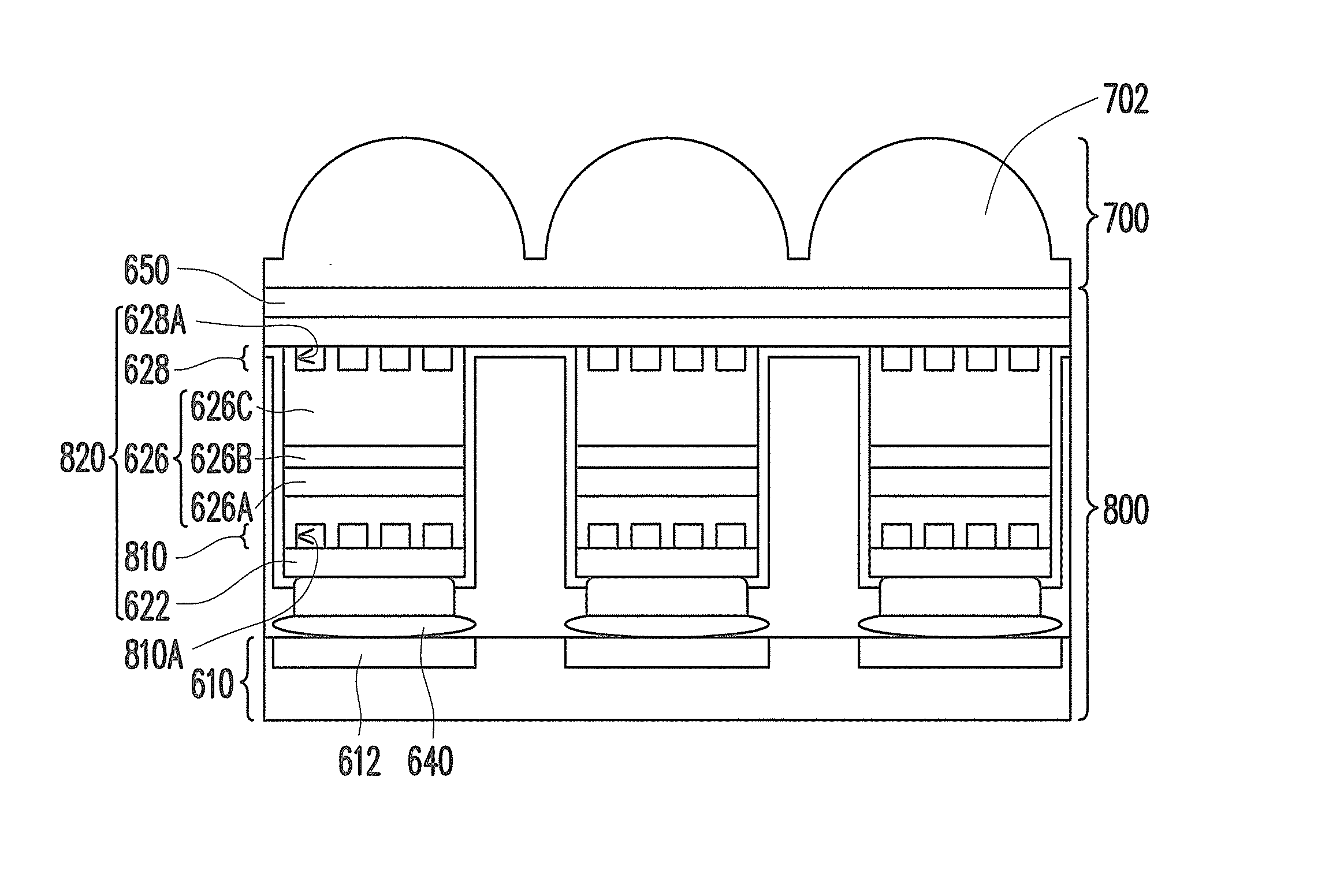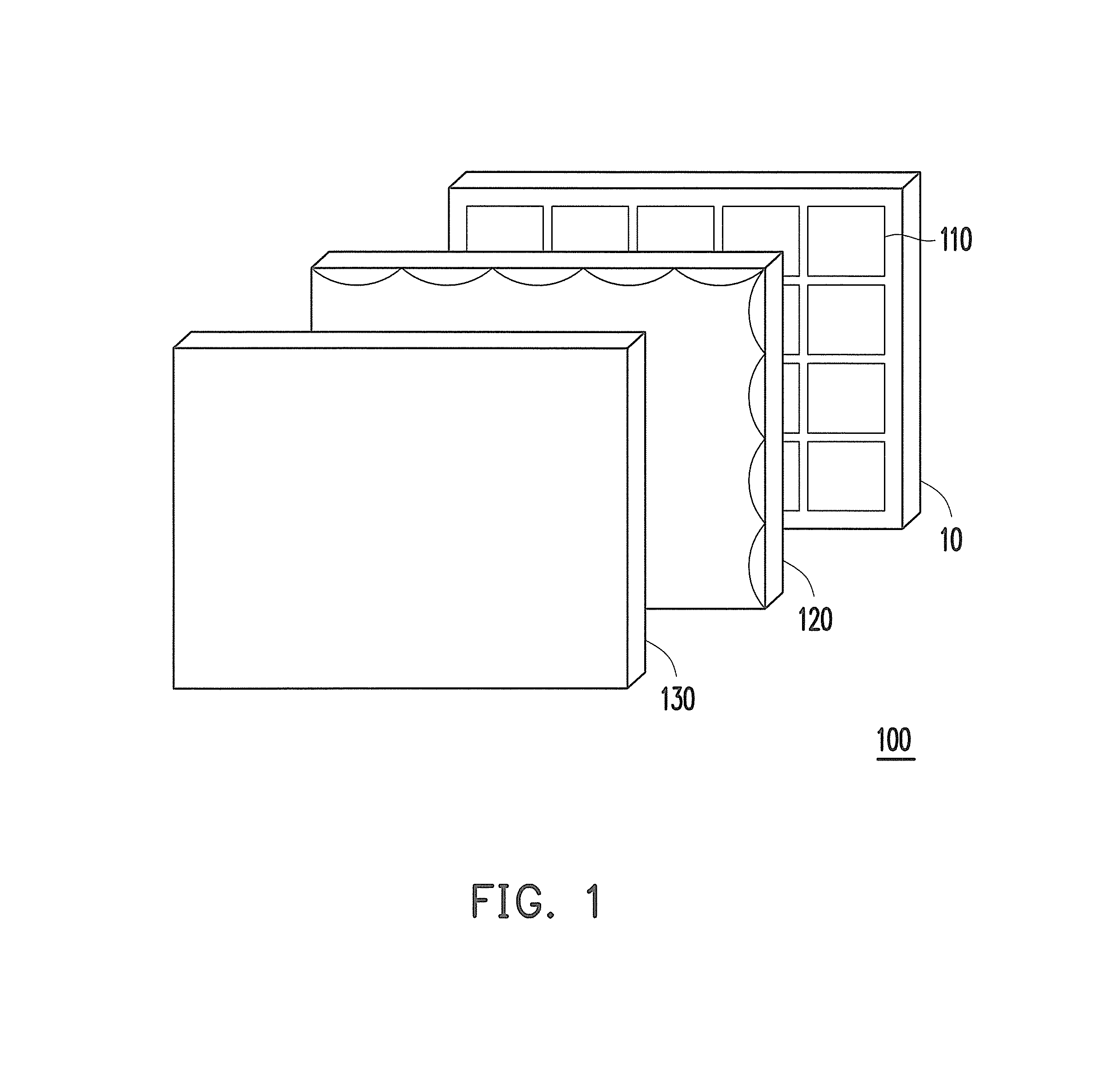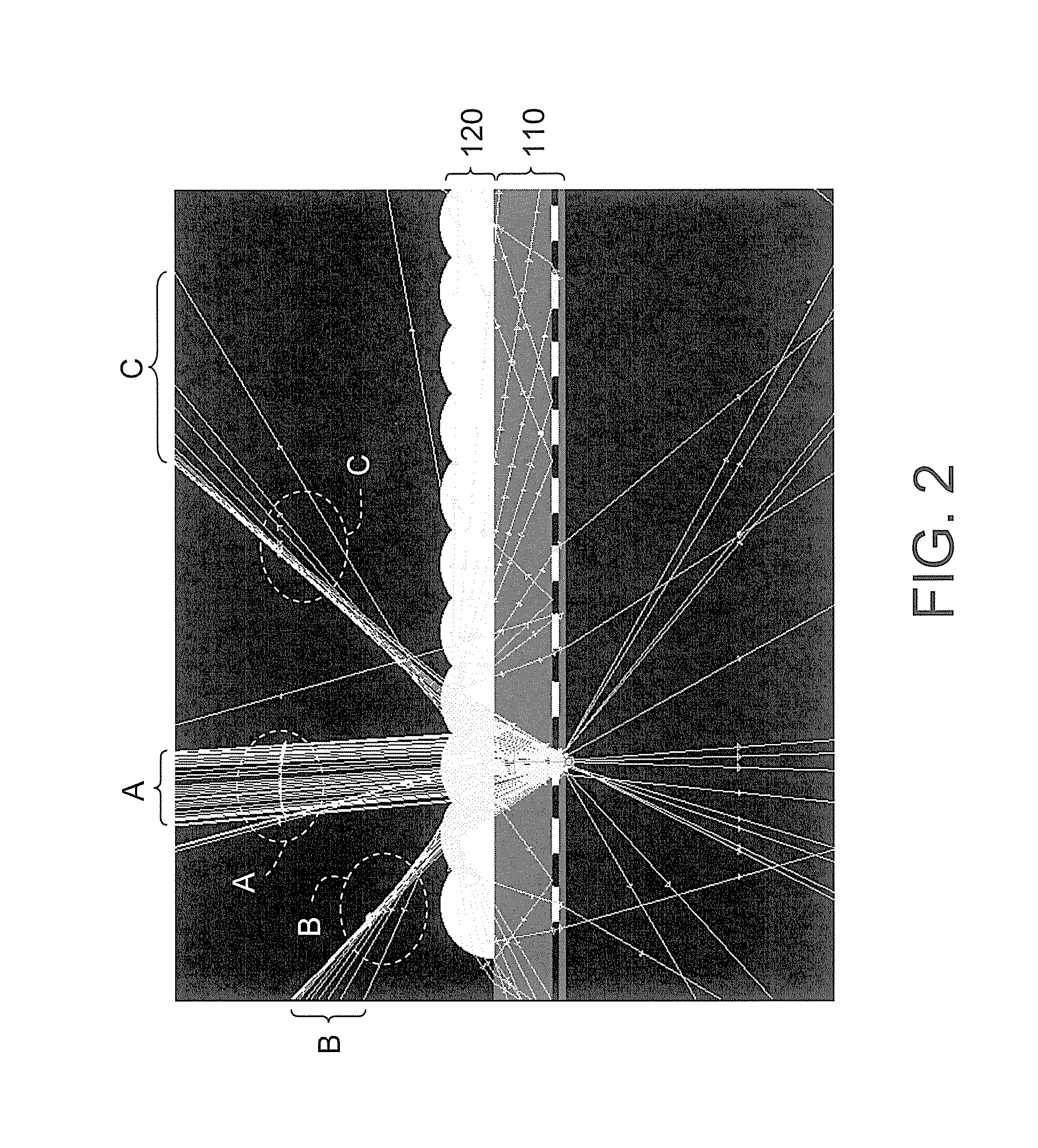Light emitting unit array and projection system
a technology of light emitting units and arrays, applied in the field of light emitting unit arrays and display devices, can solve the problems of reducing the volume of products, difficult to achieve high projection brightness of such products, and further have small volume,
- Summary
- Abstract
- Description
- Claims
- Application Information
AI Technical Summary
Benefits of technology
Problems solved by technology
Method used
Image
Examples
first embodiment
[0030]FIGS. 4a through 4i depict a fabricating method of a light emitting unit array according to the disclosure. Referring to FIG. 4a, a doped semiconductor material thin layer 222a and a plurality of light collimation structures 224 are formed on a substrate 220. In the embodiment, the substrate 220 is, for example, a sapphire substrate or other suitable substrate facilitating applying in the epitaxy process. The light collimation structures 224 are arranged in an array on the doped semiconductor material thin layer 222a and two adjacent light collimation structures 224 are separated by a gap G. The light collimation structures 224 are formed on the doped semiconductor material thin layer 222a by an optical coating process, for example.
[0031]In the present embodiment, the light collimation structures 224 can be distributed Bragg reflectors (BDRs). Namely, the light collimation structures 224 are the multi-layers formed by material layers with different refractive index, such as Ta...
third embodiment
[0049]FIGS. 9a through 9g depict a fabricating method of a light emitting unit array according to the disclosure. Referring to FIG. 9a, the first type doped semiconductor layer 522, the active layer 524, and the second type doped semiconductor layer 526 are sequentially formed on the substrate 510. The substrate 510 is, for example, a sapphire substrate or other suitable substrate facilitating applying in the epitaxy process. The first type doped semiconductor layer 522 can be an n-type doped semiconductor layer and the second type doped semiconductor layer 526 can be a p-type doped semiconductor layer. The n type doped semiconductor material and the p type doped semiconductor material selected in the present embodiment can, for example, be an n type doped GaN and a p type doped GaN. Nevertheless, in one embodiment, the n type doped semiconductor material and the p type doped semiconductor material can be other semiconductor materials doped with required dopant such as GaAlN, GaInN,...
fourth embodiment
[0056]FIG. 10 schematically illustrates a light emitting unit array and a μ-lens array according to the disclosure. Referring to FIG. 10, in the present embodiment, the μ-lens array 700 is disposed on the light emitting unit array 600 and has a plurality of μ-lens 702. The light emitting unit array 600 includes a plurality of μ-LEDs 620 arranged in an array on the substrate 610 and each μ-LED 620 is configured with the electrode 640 and the transparent conductive layer 650 at the two opposite sides thereof so as to electrically connected to an external circuit. Each electrode 640 is, for example, bonded to the circuit element 612 on the substrate 610 through the corresponding pad 660.
[0057]In the present embodiment, each of the μ-LEDs 620 includes a reflection layer 622, a contact layer 624, a light emitting structure 626, and a light collimation structure 628. The light emitting structure 626 includes the first type doped semiconductor layer 626A, the active layer 525B, and the sec...
PUM
 Login to View More
Login to View More Abstract
Description
Claims
Application Information
 Login to View More
Login to View More - R&D
- Intellectual Property
- Life Sciences
- Materials
- Tech Scout
- Unparalleled Data Quality
- Higher Quality Content
- 60% Fewer Hallucinations
Browse by: Latest US Patents, China's latest patents, Technical Efficacy Thesaurus, Application Domain, Technology Topic, Popular Technical Reports.
© 2025 PatSnap. All rights reserved.Legal|Privacy policy|Modern Slavery Act Transparency Statement|Sitemap|About US| Contact US: help@patsnap.com



